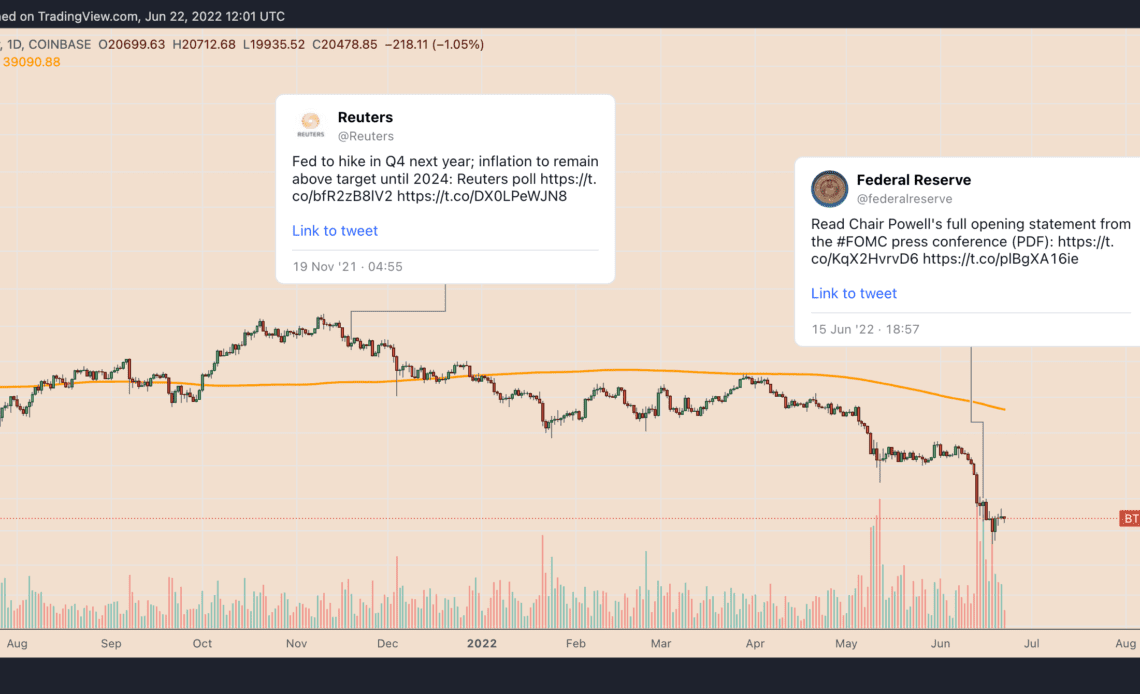Bitcoin (BTC) was a response to the 2008 global recession. It introduced a new way to transact without depending on trust of third-parties, such as banks, particularly failing banks that were nevertheless bailed out by government at the expense of the public.
“The central bank must be trusted not to debase the currency, but the history of fiat currencies is full of breaches of that trust,” Satoshi Nakamoto wrote in 2009.
Bitcoin’s genesis block sums up the intent with the following embedded message:
The Times 03/Jan/2009 Chancellor on brink of second bailout for banks.
But while Bitcoin keeps mining blocks unfazed, and its gold-like properties have attracted investors seeking “digital gold,” its current 75% comedown from $69,000 highs in November 2021 demonstrates that its not immune to global economic forces.
Simultaneously, the entire crypto market lost $2.25 trillion in the same period, hinting at large-scale demand destruction in the industry.
Bitcoin’s crash appeared during the period of rising inflation and the global central banks’ hawkish response to it. Notably, the Federal Reserve hiked its benchmark rates by 75 basis points (bps) on June 15 to curb inflation that reached 8.4% in May.
Furthermore, the crash left BTC trending even more in-sync with the tech-heavy Nasdaq Composite’s performance. The U.S. stock market index fell over 30% between November 2021 and June 2022.
More rate hikes ahead
Fed Chairman Jerome Powell noted in his Congressional testimony that their rate hikes would continue to bring down inflation, albeit adding that “the pace of those changes will continue to depend on the incoming data and the evolving outlook for the economy.”
The statement followed Reuters’ poll of economists that agreed that the Fed would raise benchmark rates by another 75 bps in July and will follow it up with a 0.5% increase in September.
That adds more downside potential to an already-declining crypto market, noted Informa Global Markets, a London-based financial intelligence firm, saying that it would not bottom out until the Fed subsides its “aggressive approach to monetary policy.”
But a U-turn on hawkish policies seems unlikely in the near term given the central bank’s 2% inflation target. Interestingly, the gap between the Fed’s fund rates and the consumer price index (CPI) is now the largest on record.

Bitcoin faces first potential recession
Nearly…
Click Here to Read the Full Original Article at Cointelegraph.com News…
























